"Any lambs?”
John O’Toole muses the question aloud as we haul the boat onto the small, stony beach.
“That must be one of the most famous phrases around here. It’s more of a greeting than a question in Connemara. My father will be awful happy there’s a lamb on the island. It’s a great boost, the landmark of the year really.”
We’re just back from visiting John’s island, where he keeps 50 blackface ewes.
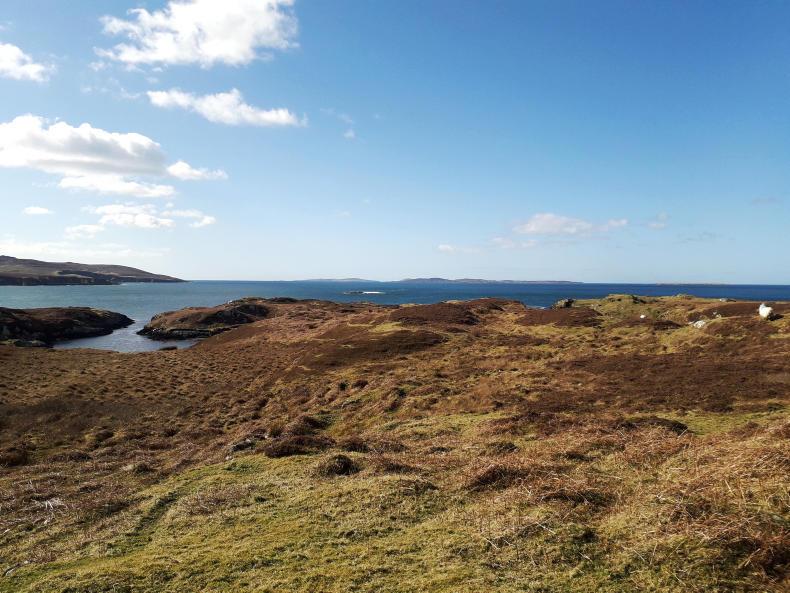
Freaghhillaun, off the coast of Connemara, where John keeps his ewes.
Arriving on the island, we climb up from the landing beach. It’s hilly. John remarks that out here he operates more of a hill sheep system than anything else. We start into a walk around the 50-acre island. Before the sheep come into view, we hear them. There’s seemingly a bleat among the baas, distinguishable only to John.
This triggers great excitement. John’s 10-year-old son Emmet is with us. The most agile, he’s quickly dispatched to the top of the hill to check. Before he says a word, the exuberance on the young boy’s face is confirmation of the first arrival of the year, a week earlier than expected.
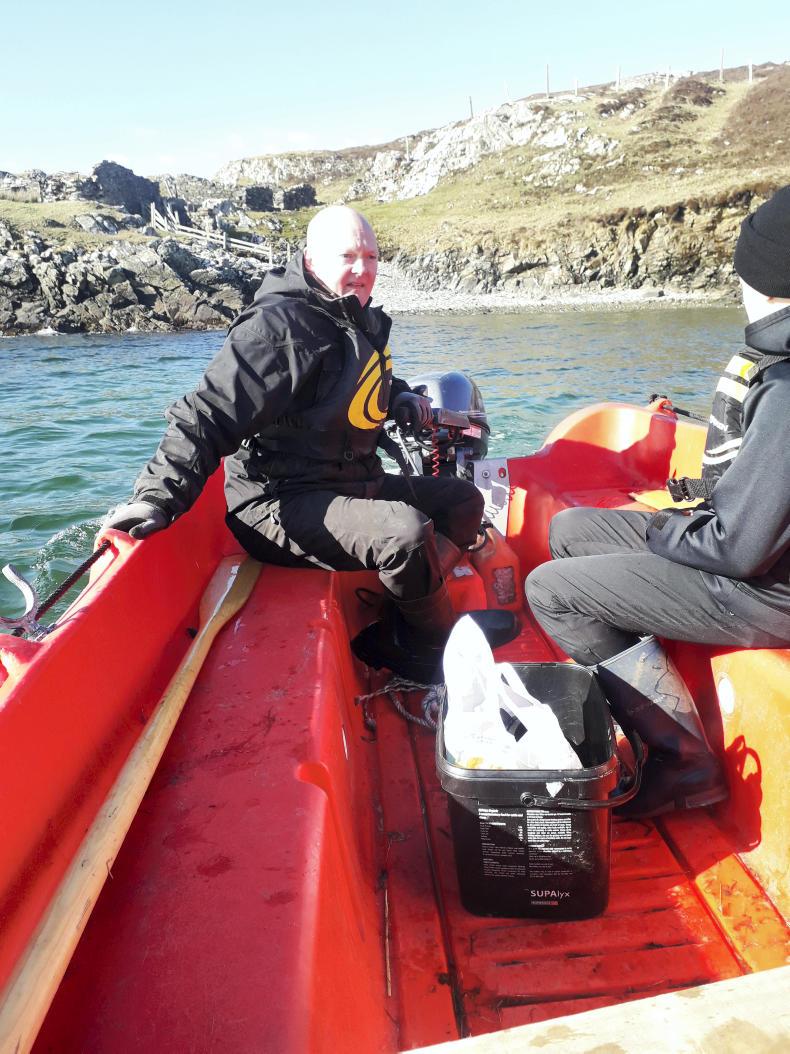
When Irish Country Living visits the island, it’s prior to lockdown. Things are only just beginning to escalate with regard to the coronavirus and we’re social distancing. The first lamb of the year is always a reason to be cheerful, the father and son tell me, but this year even more so.
From father to son
Freaghhillaun (translated from Irish as “island of heather”) is less than 1km off the Galway coast, near where John lives in Moyard, close to Letterfrack. The boat ride over, gentle on a welcome fine day, takes about 10 minutes, as the easiest point to launch from is around the bay slightly.
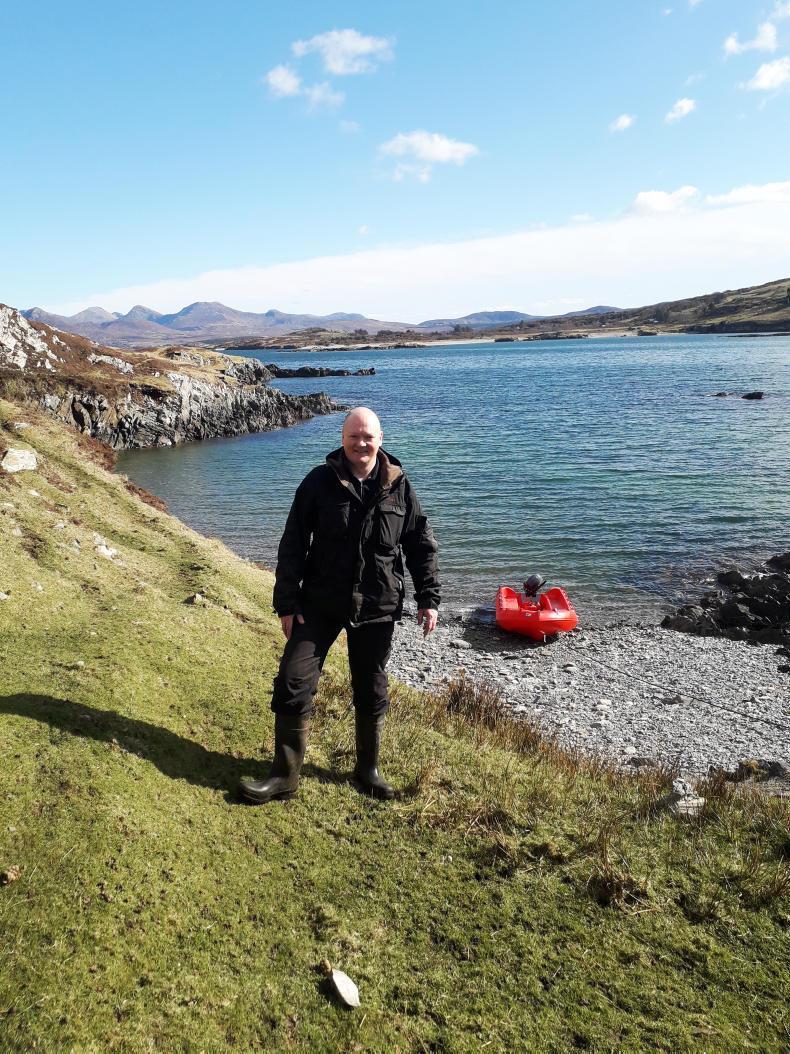
John is an organic farmer. Alongside his island stock, John keeps 20 Llyen sheep and 12 Dexter cattle on the mainland. He is also the head chef at Mitchells Café and Restaurant at Kylemore Abbey, which is of course closed at present. After a quick tour of the island, John produces sandwiches and flasks of tea from a bag. We settle down on some flat rocks and he explains how Freaghhillaun came to be his.
Although it has been uninhabited for almost 100 years, two families originally lived on the island, one of whom were the O’Malleys. John’s grandtuncle married one of the O’Malley woman. They, along with their children were the last people to live on the island. The ruins of their dwellings remain there to this day. John’s grandtuncle left the island to John’s father Joe, who in turn left it to John.
Joe kept cattle and sheep, but came out of cattle eventually as their fields on the mainland are very wet and he had them inside for half the year. They have never had cattle on the island. Six years ago, John got back into cattle, Dexters, a native breed. Their small stature suits his ground.
The youngest of seven, with five sisters and one brother, John was always the most interested in farming, but they all spent plenty of time working on the island growing up. Originally, they rowed out in a currach, which they went on to acquire an engine for. John had the currach until he bought a new boat last year. 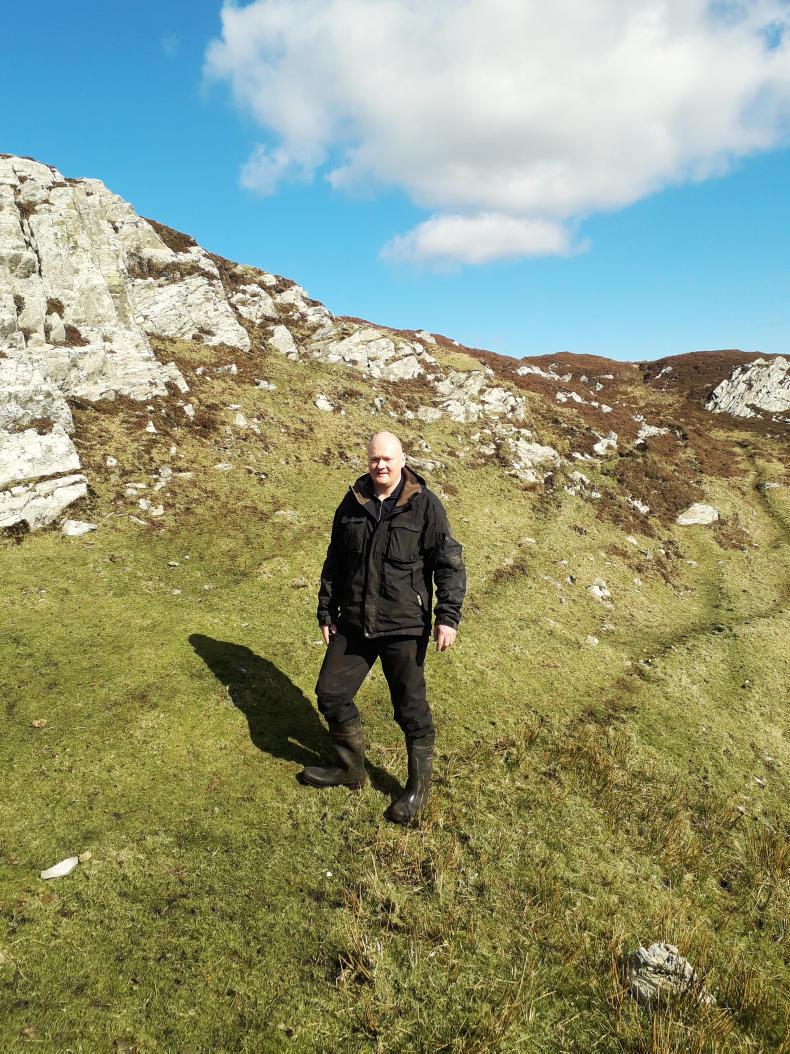
“We came out here a lot with our own father. We would be told that we were going out fishing for the day, but then you would realise half way out that you had no fishing rods. Your father would tell you: ‘It’s not a good day for fishing, it’s too bright’, or ‘It’s too dark’, or ‘It’s too wet’, or ‘It’s too dry’,” laughs John. “You’d end up doing something with the sheep out here. There was always work to be done.”
John and his wife Aoife have three sons, the aforementioned Emmet, Matthew (eight) and Jack (three). The two older boys are no strangers to the island themselves. Emmet says he loves coming out and manoeuvres the topography skillfully.
With island farming, John says you need to be innovative, especially when you also have a full-time job. You’re always watching the weather and hoping to be off on good days. But it can work to suit you too.
“There’s no way I could have a lot of sheep in the shed on the mainland lambing. I did it in previous years –one year I had 70 ewes in the shed. It was a complete nightmare at lambing time, because I wasn’t there. You’d go to work, come back after 11 or 12 hours and it would be a disaster.”
For most of the year, the sheep on the island are self-sufficient. While there are positives to this, there are also negatives. Last year 15 lambs on the island were killed by an unknown predator, a difficult situation in which you’re quite helpless, says John.
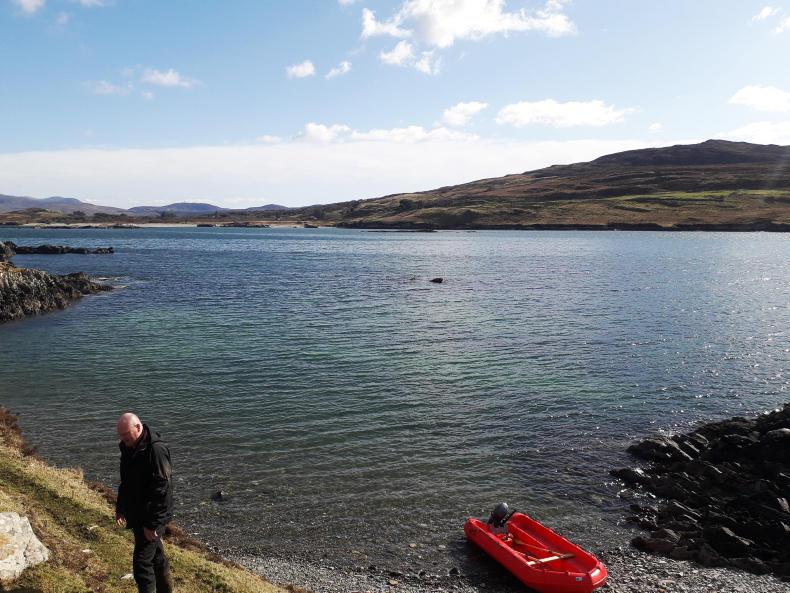
The regular routine for doing jobs on the island involves the help of a neighbour. Mostly they bring the sheep in and out on John’s boat, tying their legs in a certain fashion. The lambs come off in August for market, ewes go to the mainland as they get older and John has two rams brought out especially for breeding.
One of the old dwelling houses is used to round the sheep up into. They built a run along the side of it and put the sheep in there for dosing or whatever job is being carried out.
“There’s nothing like coming out here for a day doing a few jobs with the sheep,” smiles John. “I wouldn’t be one now for sunbathing or anything, so it’s great to come out and do something enjoyable, like rounding up sheep with your dog, your neighbour and sons. Being on the sea is lovely and sure coming out here, it’s peace on earth.”
From mother to son
If John gets his love of farming from his father, then it’s from his mother Mary he gets his love of food. She ran a B&B for years when John was younger. He can recall the meals she served in minute detail.
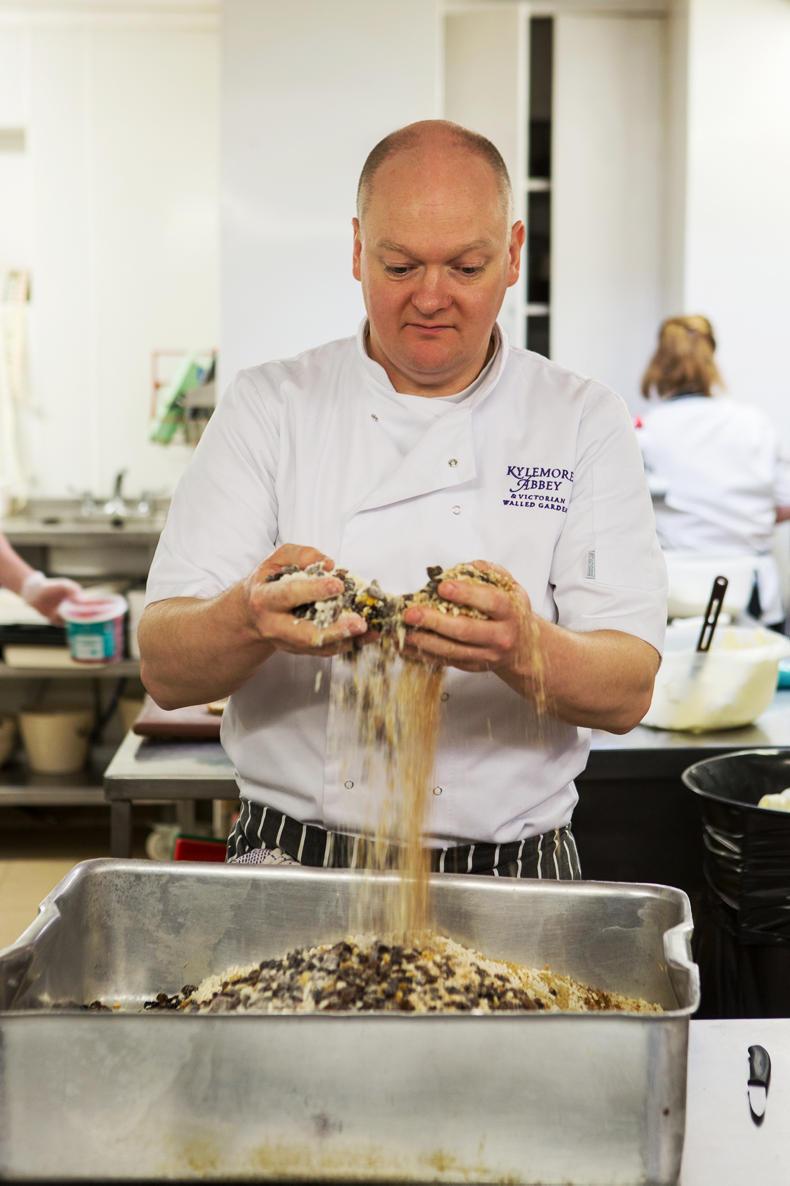
“She used to make lovely dinners for the tourists in the summer time and then lovely dinners for us in the winter time. There was always something cooking in our house. I remember my mother, how calm she used to be in the smells of the kitchen and the different things she used to make back then that are still being made now. She had a real flair for cooking, so I guess I took it from her,” reflects John.
“I can distinctly remember her cooking legs of lamb and roasts of beef, my father’s own lamb from this very island. I can especially recall one night, her putting a yellow sauce on broccoli. I actually thought it was custard, I thought it was a bit mad, but in fact what it was hollandaise sauce.”
As a child, John helped his mother with the cooking, but wasn’t especially interested. “You’d be given jobs and you’d be complaining about it, but I suppose I started cheffing as a summer job. Then it seemed I was able for it, so I got sponsored by the Rock Glen Hotel (that used to be in Clifden) to go to college.
“It was a very respectable thing, cheffing then. It was a good job to get and it was good to be working, so I kind of went along with that. I didn’t really like studying much, so it suited me. I liked working with my hands and I still do.”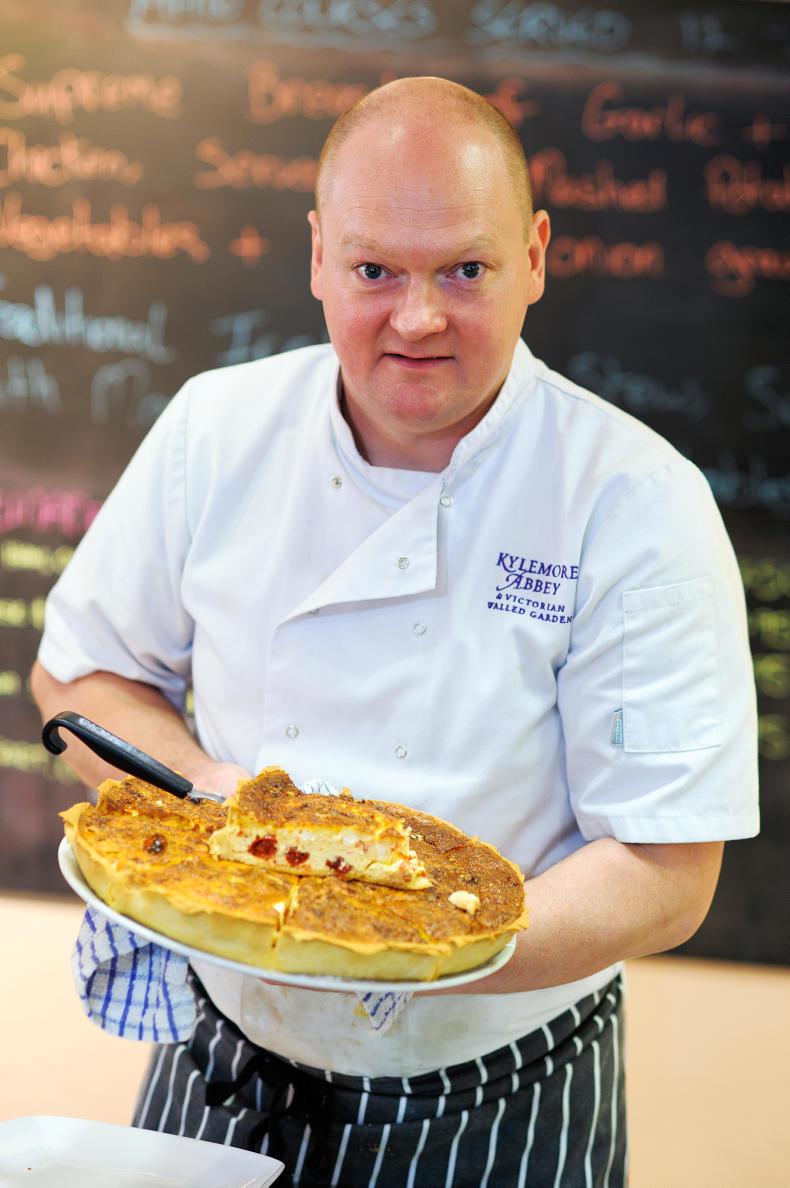
John worked as a chef in a number of different places before becoming the head chef at Kylemore Abbey eight years ago. Farming and cheffing have married well for John, as he feels working the land has given him a greater appreciation for where food comes from.
In the past he has used some of his own lamb in Kylemore on occasion, but from this year on, the plan is that all of his lamb and beef will go there. The beef from the Dexters has a very unique flavour in that it’s sweet, says John. Overall, he can’t wait to start using his own meat in his cooking on a larger scale.
“Imagine when these lambs here are ready come August, the lamb served in Kylemore will be from the chef’s actual farm. He saw them when they were born all the way through to the final product. It’s 100% authentic farm to fork.”
Back on the mainland, looking out over the water to the Twelve Bens in the distance, the boat is loaded up and it’s time to head home. John will no doubt make many more trips to the island and there will be many more lambs to go with the first, in this island to fork story.
Read more
Long read: Island hopping with Jack Heanue - farmer, fisherman and postman
Job alert for the introvert
WATCH: Shear dedication with Joanne Devaney
"Any lambs?”
John O’Toole muses the question aloud as we haul the boat onto the small, stony beach.
“That must be one of the most famous phrases around here. It’s more of a greeting than a question in Connemara. My father will be awful happy there’s a lamb on the island. It’s a great boost, the landmark of the year really.”
We’re just back from visiting John’s island, where he keeps 50 blackface ewes.

Freaghhillaun, off the coast of Connemara, where John keeps his ewes.
Arriving on the island, we climb up from the landing beach. It’s hilly. John remarks that out here he operates more of a hill sheep system than anything else. We start into a walk around the 50-acre island. Before the sheep come into view, we hear them. There’s seemingly a bleat among the baas, distinguishable only to John.
This triggers great excitement. John’s 10-year-old son Emmet is with us. The most agile, he’s quickly dispatched to the top of the hill to check. Before he says a word, the exuberance on the young boy’s face is confirmation of the first arrival of the year, a week earlier than expected.

When Irish Country Living visits the island, it’s prior to lockdown. Things are only just beginning to escalate with regard to the coronavirus and we’re social distancing. The first lamb of the year is always a reason to be cheerful, the father and son tell me, but this year even more so.
From father to son
Freaghhillaun (translated from Irish as “island of heather”) is less than 1km off the Galway coast, near where John lives in Moyard, close to Letterfrack. The boat ride over, gentle on a welcome fine day, takes about 10 minutes, as the easiest point to launch from is around the bay slightly.

John is an organic farmer. Alongside his island stock, John keeps 20 Llyen sheep and 12 Dexter cattle on the mainland. He is also the head chef at Mitchells Café and Restaurant at Kylemore Abbey, which is of course closed at present. After a quick tour of the island, John produces sandwiches and flasks of tea from a bag. We settle down on some flat rocks and he explains how Freaghhillaun came to be his.
Although it has been uninhabited for almost 100 years, two families originally lived on the island, one of whom were the O’Malleys. John’s grandtuncle married one of the O’Malley woman. They, along with their children were the last people to live on the island. The ruins of their dwellings remain there to this day. John’s grandtuncle left the island to John’s father Joe, who in turn left it to John.
Joe kept cattle and sheep, but came out of cattle eventually as their fields on the mainland are very wet and he had them inside for half the year. They have never had cattle on the island. Six years ago, John got back into cattle, Dexters, a native breed. Their small stature suits his ground.
The youngest of seven, with five sisters and one brother, John was always the most interested in farming, but they all spent plenty of time working on the island growing up. Originally, they rowed out in a currach, which they went on to acquire an engine for. John had the currach until he bought a new boat last year. 
“We came out here a lot with our own father. We would be told that we were going out fishing for the day, but then you would realise half way out that you had no fishing rods. Your father would tell you: ‘It’s not a good day for fishing, it’s too bright’, or ‘It’s too dark’, or ‘It’s too wet’, or ‘It’s too dry’,” laughs John. “You’d end up doing something with the sheep out here. There was always work to be done.”
John and his wife Aoife have three sons, the aforementioned Emmet, Matthew (eight) and Jack (three). The two older boys are no strangers to the island themselves. Emmet says he loves coming out and manoeuvres the topography skillfully.
With island farming, John says you need to be innovative, especially when you also have a full-time job. You’re always watching the weather and hoping to be off on good days. But it can work to suit you too.
“There’s no way I could have a lot of sheep in the shed on the mainland lambing. I did it in previous years –one year I had 70 ewes in the shed. It was a complete nightmare at lambing time, because I wasn’t there. You’d go to work, come back after 11 or 12 hours and it would be a disaster.”
For most of the year, the sheep on the island are self-sufficient. While there are positives to this, there are also negatives. Last year 15 lambs on the island were killed by an unknown predator, a difficult situation in which you’re quite helpless, says John.

The regular routine for doing jobs on the island involves the help of a neighbour. Mostly they bring the sheep in and out on John’s boat, tying their legs in a certain fashion. The lambs come off in August for market, ewes go to the mainland as they get older and John has two rams brought out especially for breeding.
One of the old dwelling houses is used to round the sheep up into. They built a run along the side of it and put the sheep in there for dosing or whatever job is being carried out.
“There’s nothing like coming out here for a day doing a few jobs with the sheep,” smiles John. “I wouldn’t be one now for sunbathing or anything, so it’s great to come out and do something enjoyable, like rounding up sheep with your dog, your neighbour and sons. Being on the sea is lovely and sure coming out here, it’s peace on earth.”
From mother to son
If John gets his love of farming from his father, then it’s from his mother Mary he gets his love of food. She ran a B&B for years when John was younger. He can recall the meals she served in minute detail.

“She used to make lovely dinners for the tourists in the summer time and then lovely dinners for us in the winter time. There was always something cooking in our house. I remember my mother, how calm she used to be in the smells of the kitchen and the different things she used to make back then that are still being made now. She had a real flair for cooking, so I guess I took it from her,” reflects John.
“I can distinctly remember her cooking legs of lamb and roasts of beef, my father’s own lamb from this very island. I can especially recall one night, her putting a yellow sauce on broccoli. I actually thought it was custard, I thought it was a bit mad, but in fact what it was hollandaise sauce.”
As a child, John helped his mother with the cooking, but wasn’t especially interested. “You’d be given jobs and you’d be complaining about it, but I suppose I started cheffing as a summer job. Then it seemed I was able for it, so I got sponsored by the Rock Glen Hotel (that used to be in Clifden) to go to college.
“It was a very respectable thing, cheffing then. It was a good job to get and it was good to be working, so I kind of went along with that. I didn’t really like studying much, so it suited me. I liked working with my hands and I still do.”
John worked as a chef in a number of different places before becoming the head chef at Kylemore Abbey eight years ago. Farming and cheffing have married well for John, as he feels working the land has given him a greater appreciation for where food comes from.
In the past he has used some of his own lamb in Kylemore on occasion, but from this year on, the plan is that all of his lamb and beef will go there. The beef from the Dexters has a very unique flavour in that it’s sweet, says John. Overall, he can’t wait to start using his own meat in his cooking on a larger scale.
“Imagine when these lambs here are ready come August, the lamb served in Kylemore will be from the chef’s actual farm. He saw them when they were born all the way through to the final product. It’s 100% authentic farm to fork.”
Back on the mainland, looking out over the water to the Twelve Bens in the distance, the boat is loaded up and it’s time to head home. John will no doubt make many more trips to the island and there will be many more lambs to go with the first, in this island to fork story.
Read more
Long read: Island hopping with Jack Heanue - farmer, fisherman and postman
Job alert for the introvert
WATCH: Shear dedication with Joanne Devaney











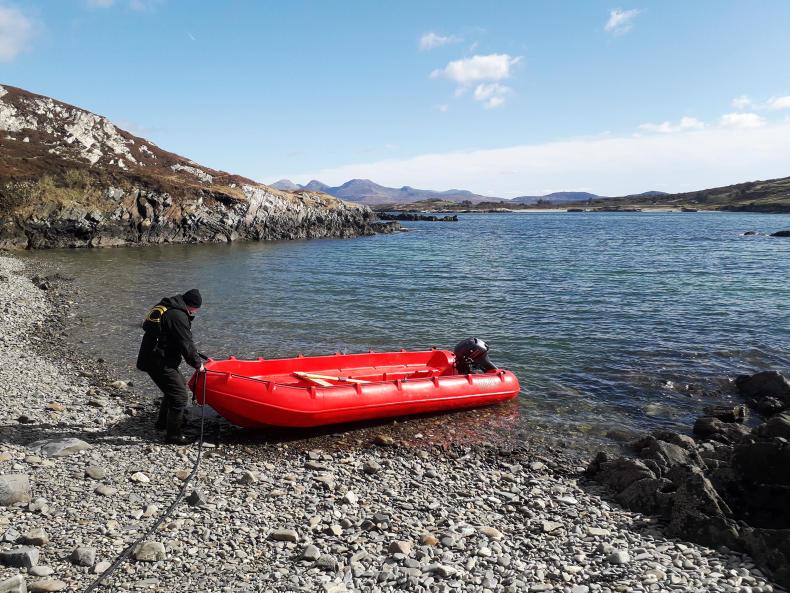
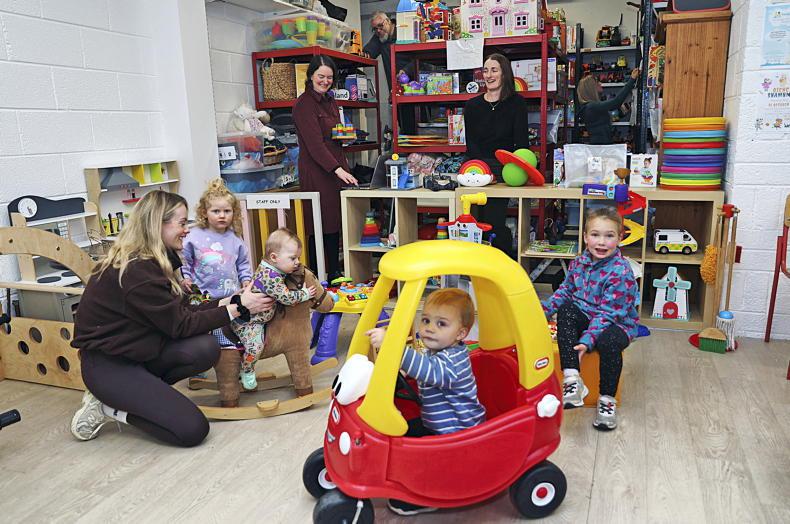
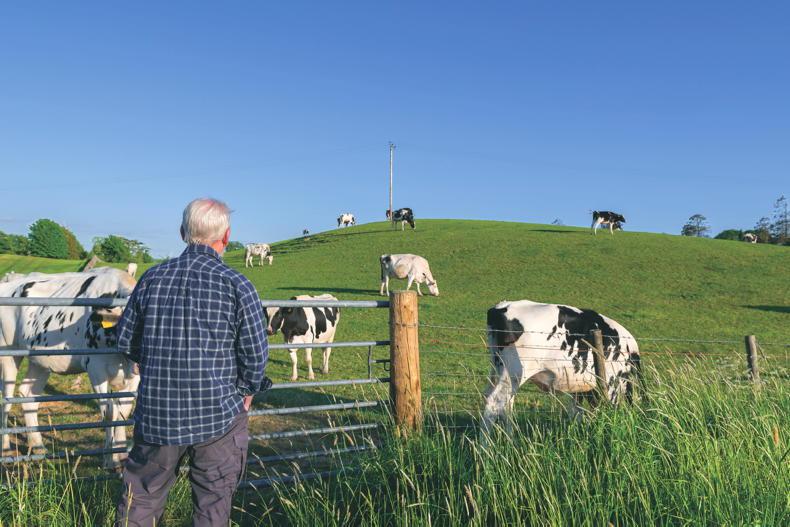
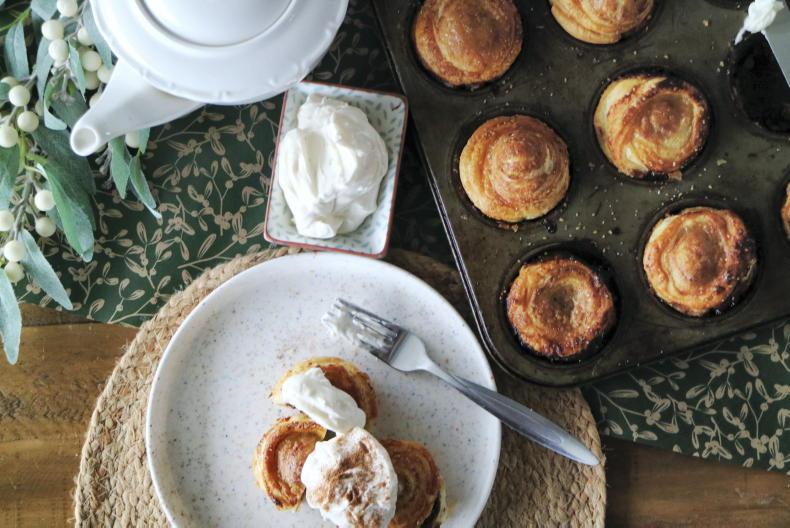

SHARING OPTIONS